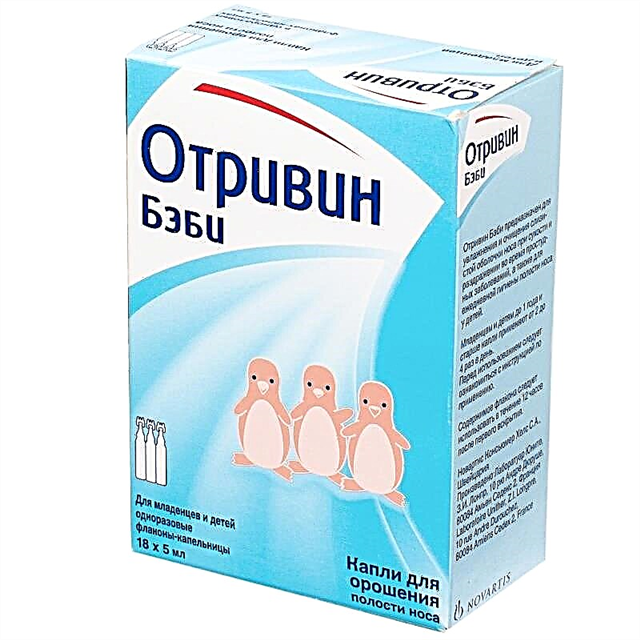Now it's time to introduce the first complementary foods for your baby. Very often, doctors recommend gluten-free cereals as the first complementary food. But acquaintance with a new type of nutrition can be clouded by the manifestation of food hypersensitivity in a child.
Until now, it was believed that buckwheat is a hypoallergenic product. However, buckwheat is very rich in proteins, which undoubtedly, like all plant proteins, may have immune activity.
What is food allergy?
This type of allergy can be described as a state of hypersensitivity of the immune system to certain foods. The formation of food hypersensitivity is based on immune and pseudo-allergic processes.
About 10% of children under one year old suffer from food allergies to various grains. Buckwheat is no exception.
Risk factors for the development of food hypersensitivity in infants
Such predispositions include the following states:
- high permeability of the intestinal mucosa;
- reduced serum immunoglobulins;
- genetic predisposition;
- artificial feeding;
- bad habits of the mother;
- frequent SARS;
- early introduction of complementary foods;
- improper nutrition of the mother during pregnancy and lactation.
Allergy to buckwheat in babies
Food allergens are the cause. They are high molecular weight proteins.

The properties of these allergens are:
- thermal stability, that is, resistance to high temperatures;
- resistance to enzymes of the gastrointestinal tract;
- solubility in water.
The mechanism of the formation of an allergic reaction to buckwheat in children
Buckwheat breakdown products - amino acids are captured by the intestinal epithelium. An immunological reaction occurs with the appearance of special lymphocytes, which then enter the lymph nodes and the spleen.
From there, immune cells enter the skin, intestinal mucosa, and the digestive system.
Adverse reactions to buckwheat in children
Reactions can be toxic and non-toxic, with immune and non-immune mechanisms of development.
A real allergy to buckwheat proceeds by an IgE-dependent mechanism, but food intolerance is often found, the occurrence and development of which is not associated with immune mechanisms.
What does a child's allergy to buckwheat look like?
The manifestations of an allergy to buckwheat can be systemic and local, that is, affect individual organs and tissues.

Here the main manifestations of buckwheat intolerance:
- the most striking manifestation of food allergies is a skin rash in the form of dermatitis and urticaria;
- anaphylactic shock, widespread urticaria and angioedema are considered the most life-threatening manifestations;
- on the part of the respiratory system, an allergy to buckwheat can manifest itself as a runny nose, food bronchial asthma;
- the baby may experience lacrimation and swelling of the eyelids;
- various rashes appear on the skin, often accompanied by itching.
Often in children, allergies are manifested by a lesion of the digestive system in the form of gastritis, enterocolitis, constipation, and diarrhea.
Oral allergic syndrome
This is the earliest and most dangerous manifestation of food allergy.
Manifested by swelling, burning of the oral mucosa. A rash may appear around the mouth.
How to suspect a baby's allergy to buckwheat?
First of all - the coincidence of the time when buckwheat porridge is introduced into the child's diet and the appearance of rashes or other clinical symptoms.
Survey
- an allergist may prescribe a skin allergy test for a child with buckwheat allergens or a blood test to detect specific antibodies.
- doctors also advise the baby's relatives to keep a food diary, which indicates the foods consumed, the time of manifestation of allergy symptoms;
- Perhaps the child will be recommended provocative tests - oral and double-blind placebo-controlled tests.

Also can be assigned:
- determination of tryptase, histamine, eosinophilic cationic protein in the blood;
- general urine analysis (OAM);
- rhinocytogram with rhinitis;
- complete blood count (CBC) to determine the number of eosinophils;
- coprogram for stool disorders;
- blood chemistry.
Instrumental diagnostics:
- Ultrasound of the abdominal organs;
- electrocardiogram (ECG);
- fibroesophagogastroduodenoscopy (FEGDS);
- tissue biopsy.
Dysfunction of enzymes, intolerance to certain foods are not considered manifestations of food hypersensitivity.
Food allergy therapy
- Elimination diet. First of all, it includes the exclusion of buckwheat from the diet of a child and a nursing mother.
- Hypoallergenic life. The doctor conducts a conversation with the parents about the presence of cross-allergic reactions. There should be no objects containing this allergen around the child. For example, orthopedic pillows filled with buckwheat husks have become quite popular now. Such bedding can provoke a severe allergic reaction in a baby, up to anaphylactic shock.
- Correct introduction of complementary foods. We introduce complementary foods gradually, starting with a volume of 5 ml.
- Medication for allergy symptoms. Antihistamines (Suprastin, Zyrtec, Tsetrin), stabilizers of mast cell membranes (Singular), hormones (Prednisolone, Dexamethasone) are used for angioedema and common urticaria.
- Local therapy. In the presence of rashes, creams with glucocorticoids, local antihistamines (Psilo-balm) are prescribed to relieve itching.
Recommendations for parents whose children suffer from any manifestation of food allergies
- Various infections, fermentopathies, toxins, preservatives, dyes can be the reasons for undesirable reactions to food.
- The manifestations of food hypersensitivity are clinically very diverse in terms of the severity of the course - from a mild rash to anaphylactic shock.
- A true food allergy manifests itself almost immediately after a substance is consumed.
- Fermentopathy is a malfunction of the endocrine glands. Clinical manifestations similar to allergies can be associated with fermentopathy.
- An undesirable reaction to the chemical components of food is called food intolerance and is not an allergy.
The main thing that parents need to know is that children tend to "outgrow" any manifestations of food allergies. Therefore, do not panic when the doctor announces the diagnosis of "food allergy".
Summarizing
So, it is important for parents to know the following:
- buckwheat is very rich in proteins, which undoubtedly, like all plant proteins, can have immune activity;
- food allergy can be described as a state of increased sensitivity of the body to certain foods;
- a real allergy to buckwheat proceeds according to an IgE-dependent mechanism, but food intolerances that are not associated with immune processes are often found;
- the most common symptoms of allergies are dermatitis and hives;
- the most dangerous manifestations are anaphylactic shock, widespread urticaria and angioedema;
- The treatment of food allergy to buckwheat begins with an elimination diet. And this is a mandatory exclusion of buckwheat from the diet of a child and a nursing mother.
Article rating:



